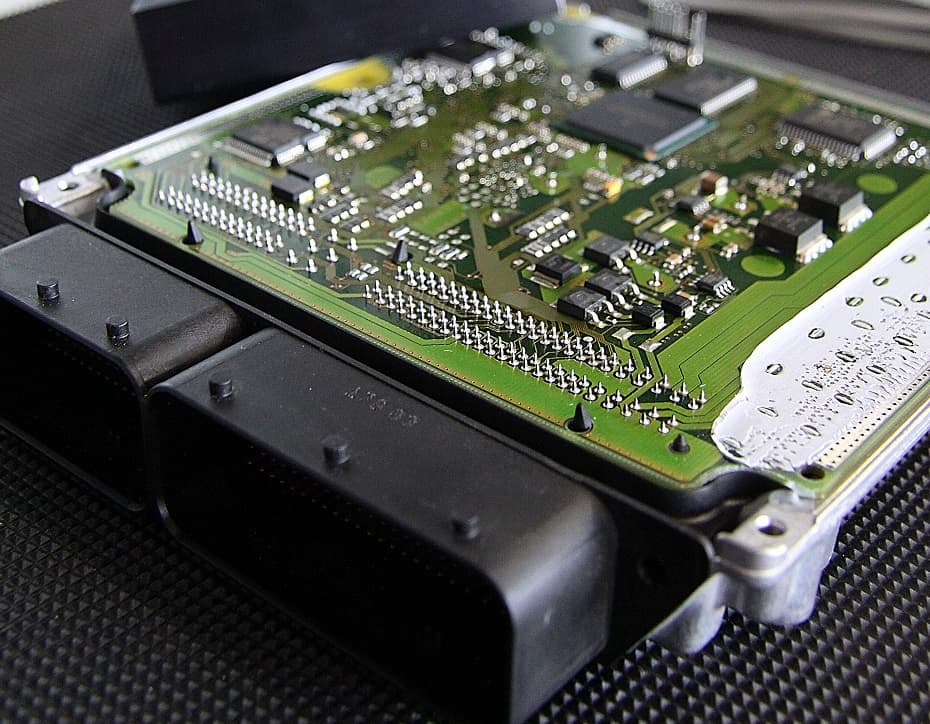Copper dendrites are a little-known but vastly important part of building a car. They’re microscopic structures that can form in your ECU modules’ circuits when exposed to pure water (such as condensation).
Most people haven’t heard of them before. However, if they form in large enough quantities, they’ll damage your electrics, destroy your ECU, and could start an electrical fire.
That’s why it’s so important to never open any of your car’s control modules. The most significant risk in terms of dendrite growth is damage to the box’s sealing or its connector.
You’ll need a professional automotive electrician to install a new one. It’s expensive but much less costly than losing your car altogether!
Table of ContentsShow
What Are Copper Dendrites?

Copper dendrites are microscopic structures. When copper is exposed to atmospheric oxygen and an electrolyte, it oxidizes. Since the copper crystals are so fine, they appear black.
For copper dendrite formation, you need de-ionized water. This is usually found in the natural form of condensation.
Rainfall or tap water in hard-water areas often isn’t pure enough due to carbonate ions, dissolved carbon dioxide, and sulfur gases. However, this should be taken on a case-by-case basis. Your local rainwater might allow dendrite growth.
Copper is attracted from the anode (positive) to the cathode (negative). It collects here and builds on itself as it attracts more and more ions. This forms a snaking pattern akin to a tree-growth timelapse but takes only a minute or so.
Copper dendrites are obvious on bare circuit boards. You’d see a general black color coating most of the affected surface.
Manufacturers carefully design circuit boards to prevent dendrite buildup. If you tamper with a car’s electronics and cause dendrite growth, the circuit will short and spark.
Should this happen in large enough quantities with sufficient heat, it could turn into a fire. You’ll be liable for the damage here – not the manufacturer.
Check out this study on nickel dendrite formation. It’s less common than copper and chemically different, but gives you a brief overview.
When Do Copper Dendrites Form In ECUs?

Copper dendrites form in ECUs when water bridges the gap between any anode (+) and cathode (-).
They look like a branch snaking out from the cathode (-). Perhaps you’ve seen lightning form in slow motion. It’s the same sort of path.
Technically, the copper is being attracted from the anode. It zips across the space through the water, attaching to the cathode to form a dendrite.
As more copper spills across, the dendrite bridges the gap completely. Once this happens, it creates a mini short circuit.
Dendrites usually blow like fuses since they can’t handle the current flow. This creates a tiny spark and, in itself, isn’t too dangerous.
The danger comes from a circuit board being continually exposed to moisture and current. Here, the dendrites keep on building up.
Although they’re still blowing like fuses, more are forming quickly due to moisture exposure.
Copper Dendrites Lead To Electrical Fires

Once enough copper dendrites have formed, the circuit board will start to visibly spark. It’s short-circuiting across its entire surface.
This, of course, leads to heat. And heat, combined with a flammable board, sparks, and oxygen? Well, that equals an electrical fire.
These days, circuit boards are built with flame-resistant materials and coatings. It takes a considerable amount of dendrite buildup and a high current to create a fire. That shouldn’t happen unless:
- You fiddle with the box, creating a space where moisture can get in
- The module box is damaged in an accident or during a repair
- There are component defects
Head to the NHTSA’s website to learn more about electrical fires. Here’s a related press release about a recent Hyundai and Kia recall.
What Happens If Rainwater Gets Into A Car’s Control Module Box?

Rainwater droplets will also cause problems. Although it might not lead to dendrite growth, it could still cause a fire or poor performance. In certain areas, it contains a much higher mineral content than condensation.
When rainwater drips onto a circuit board, it’ll cause a buildup of copper. In this case, you’re likely to see a slight greenish tinge to the surface.
The heat from the current passing through the wires will relatively quickly evaporate the rainwater. It’s less likely to spark and short circuit to a dangerous level – but still very possible!
Rainfall can still cause copper dendrite buildup, even in hard water areas. The water evaporates due to the heat. The pure, de-ionized water then condenses on the board. This will – without a doubt – cause dendrite growth.
Either way, rainwater will still certainly reduce your ECU’s performance. Over time, the affected control module will stop working correctly, and you’ll need a new one. Always get a new control module from a professional automotive electrician.
The Importance Of Leaving A Well-Designed ECU Well Alone

Certain car modification websites and books suggest physically tampering with your car’s ECU or its circuitry.
Don’t do that.
It’s not a good idea, as demonstrated on this page.
Here’s the thing. Your ECU might not be performing well or might need moving to make room for something else. But how much damage are you going to do as a trade-off? Probably quite a lot!
Manufacturers put components through rigorous testing – thousands and thousands of hours. The ECU modules are some of the most thoroughly tested.
There are so many factors to consider, any of which could lead to ECU failure or even electrical fires. At some point, you have to trust the system.
Some cars might be well known for electrical failure. In that case, it’s best to simply not buy them.
You could be liable for any damage caused by fiddling with the ECU. It’s not worth it.
Copper dendrite buildup can be devastating. The best way to avoid it? Leave it well enough alone!




